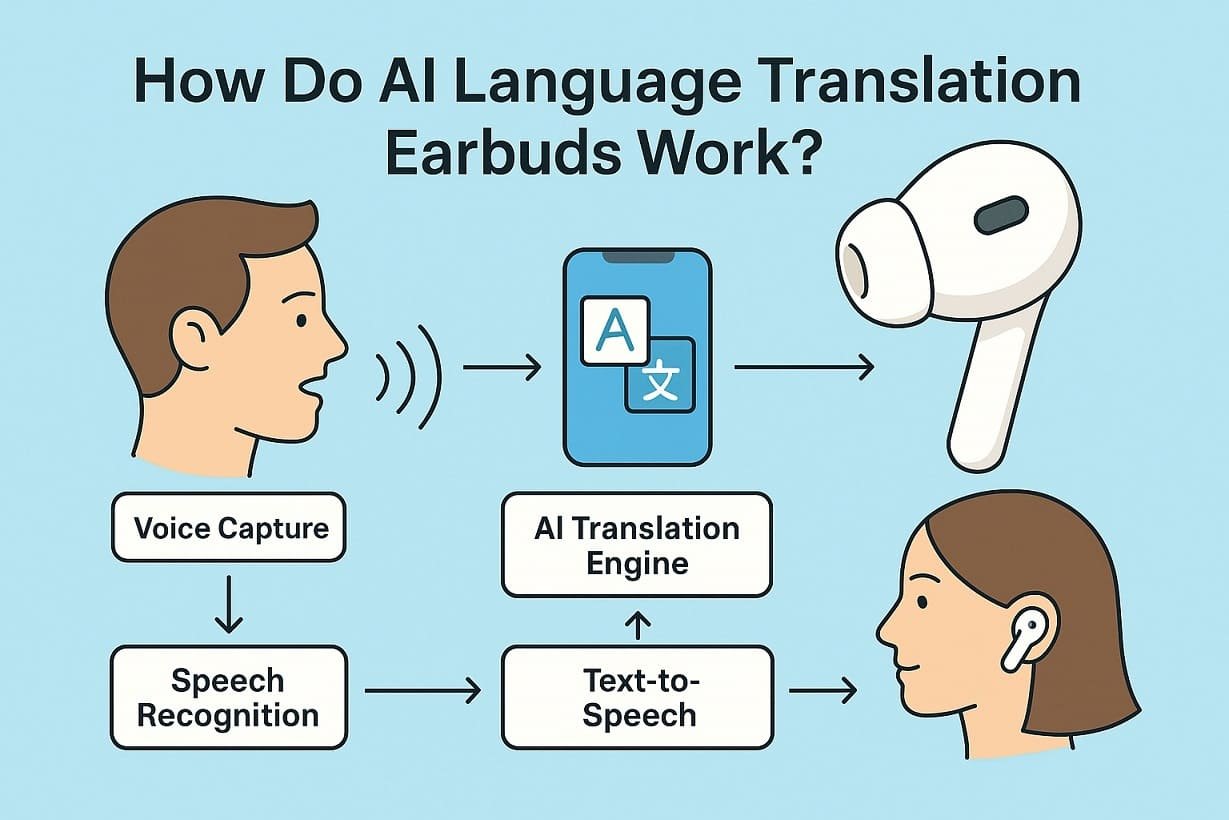
In a world that's becoming increasingly connected, the ability to communicate across languages is more valuable than ever. Enter AI language translation earbuds—a groundbreaking innovation that combines real-time translation, wireless audio technology, and artificial intelligence into a pair of compact, wearable devices. These futuristic earbuds promise to break down language barriers on the go, whether you're traveling abroad, conducting international business, or simply trying to make a new friend from a different culture.
But how do they actually work? Let’s take a closer look.
At their core, AI translation earbuds are wireless earbuds powered by Bluetooth, just like regular wireless earbuds. They connect to your smartphone via Bluetooth, allowing for seamless audio streaming and control. However, what sets them apart is the integration of AI-driven translation engines—either built into the earbuds themselves or accessed through a connected mobile app.
These earbuds capture spoken language using built-in microphones, process it in real time, translate it using AI algorithms, and then play the translated audio through the speakers—all in a matter of seconds.
Here’s a simplified breakdown of what happens when you use AI translation earbuds:
Step 1: Voice Capture - The person you’re speaking to talks into the earbud mic, or into your phone if using an app-based model.
Step 2: Speech Recognition - The earbuds or connected app convert the audio into text using speech-to-text (STT) technology.
Step 3: AI Translation Engine - The text is then fed to a neural machine translation (NMT) system—similar to what services like Google Translate use. This AI system understands context, grammar, and idiomatic expressions to provide accurate translations.
Step 4: Text-to-Speech (TTS) - The translated text is converted back into natural-sounding speech in your selected language using TTS technology.
Step 5: Output to User - The translated audio is then played through your earbuds—or, in two-way mode, through the other person's earbuds or speaker.
Most high-end translation earbuds rely on cloud-based AI models to deliver the most accurate translations. This means they need an internet connection (via your smartphone) to work effectively. However, many earbuds now offer offline translation modes for basic conversation in select languages—ideal for travel in areas with poor connectivity.
AI translation earbuds usually offer multiple usage modes:
AI language translation earbuds represent a major leap forward in real-time communication. By combining the power of speech recognition, machine translation, and wireless audio into one compact device, these earbuds are revolutionizing how people interact across language barriers.
While they aren’t perfect replacements for professional interpreters, they’re incredibly useful tools that continue to improve as AI gets smarter. Whether you're traveling the globe or building connections across cultures, translation earbuds are shaping the future of human interaction—one word at a time.
Q1. What are AI language translation earbuds?
AI translation earbuds are wireless earbuds equipped with artificial intelligence that translate spoken language in real time using speech recognition and machine translation.
Q2. Do translation earbuds work offline?
Some earbuds support offline translation in a limited number of languages, but for best accuracy and language support, most rely on an internet connection.
Q3. How accurate are AI translation earbuds?
While not perfect, modern translation earbuds are quite accurate for everyday conversation. However, they may struggle with slang, heavy accents, or complex topics.
Q4. Can both people in a conversation use translation earbuds?
Yes, in two-way mode, each person can wear one earbud, allowing both sides to hear translated speech in real time for a smoother conversation.
Q5. What languages do translation earbuds support?
The number of supported languages varies by brand, but most premium models cover 40–100+ languages including English, Spanish, Chinese, French, Japanese, and more.
Image Credits: Created by ChatGPT with DALL·E, OpenAI
Comments